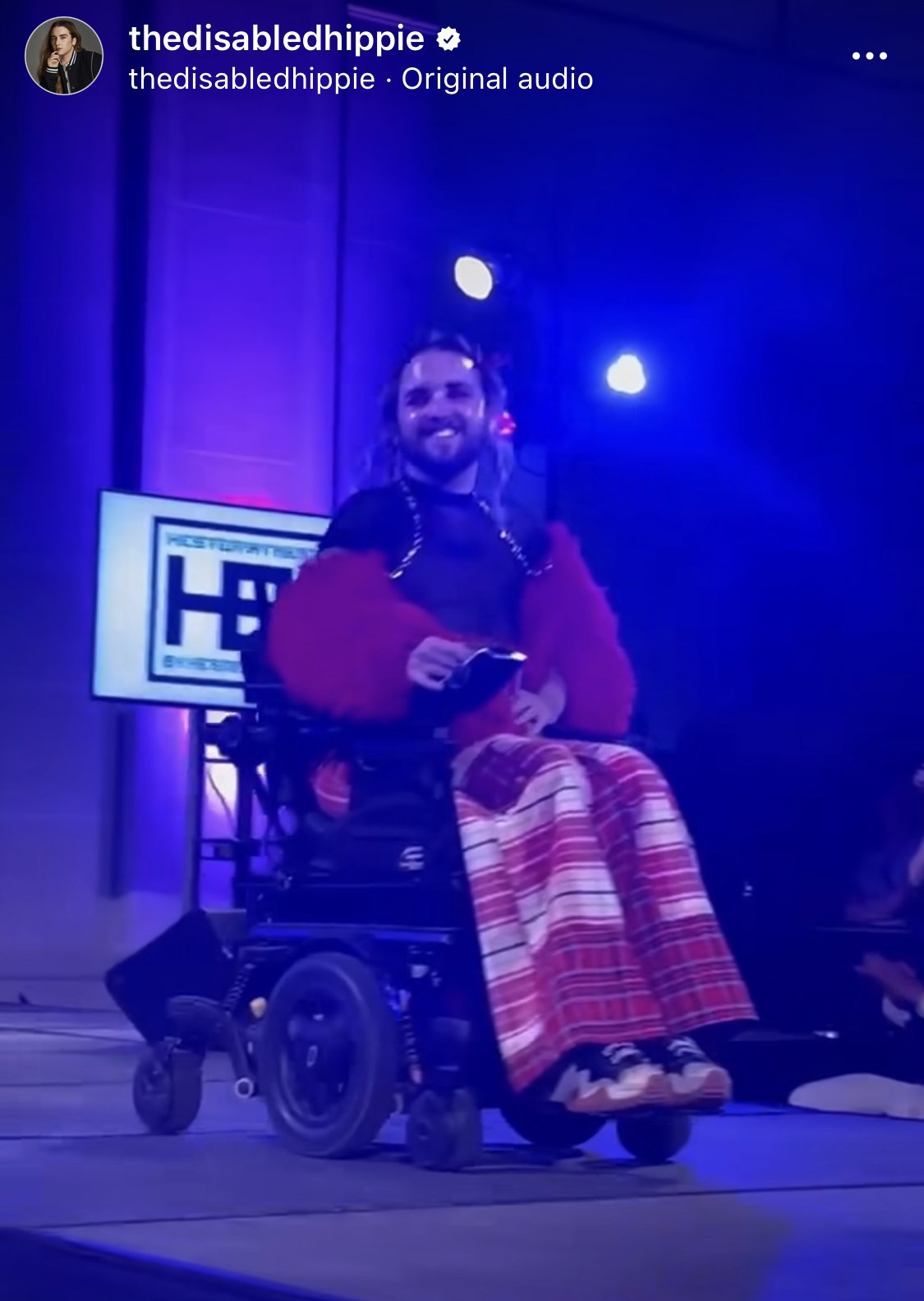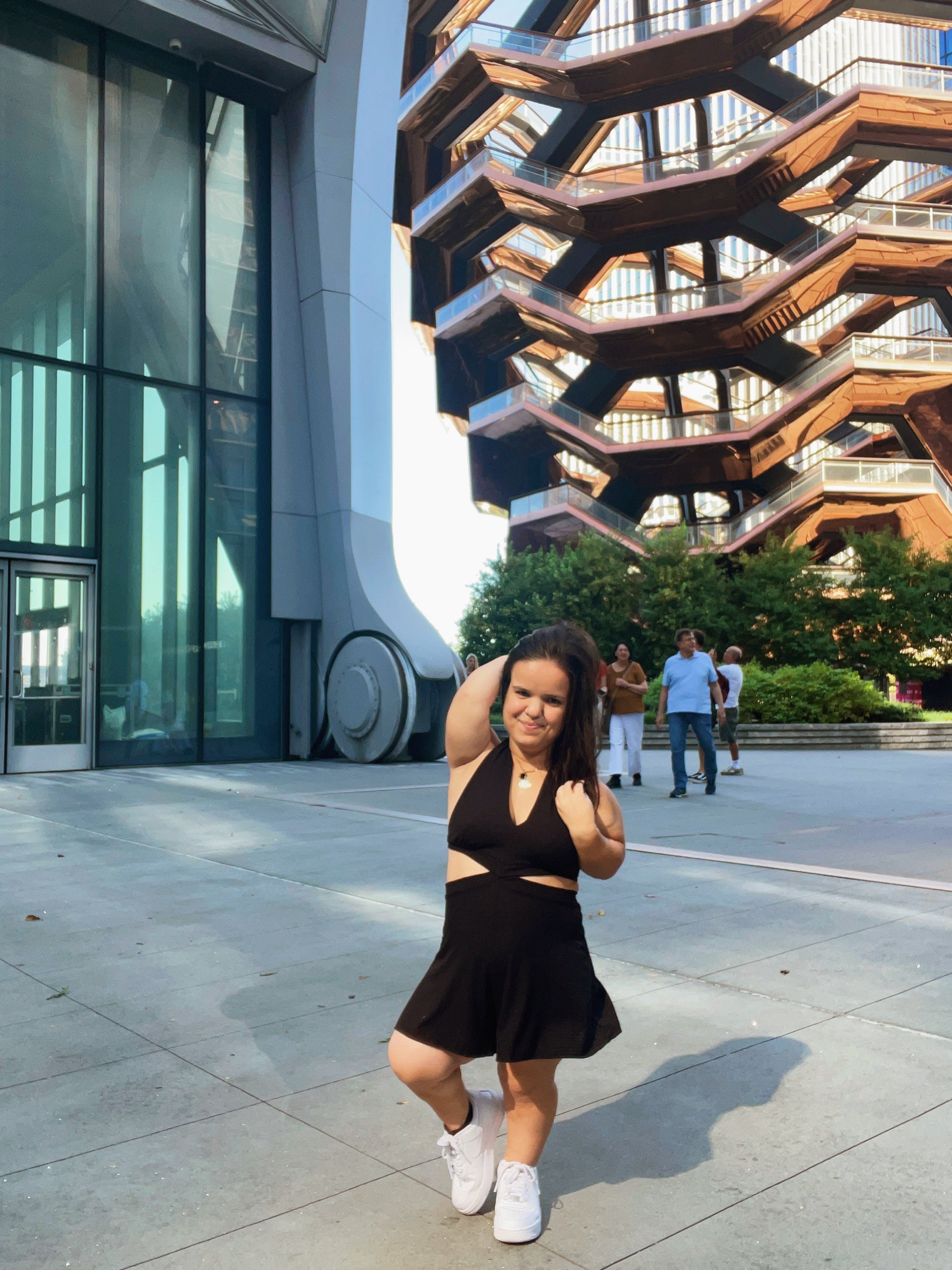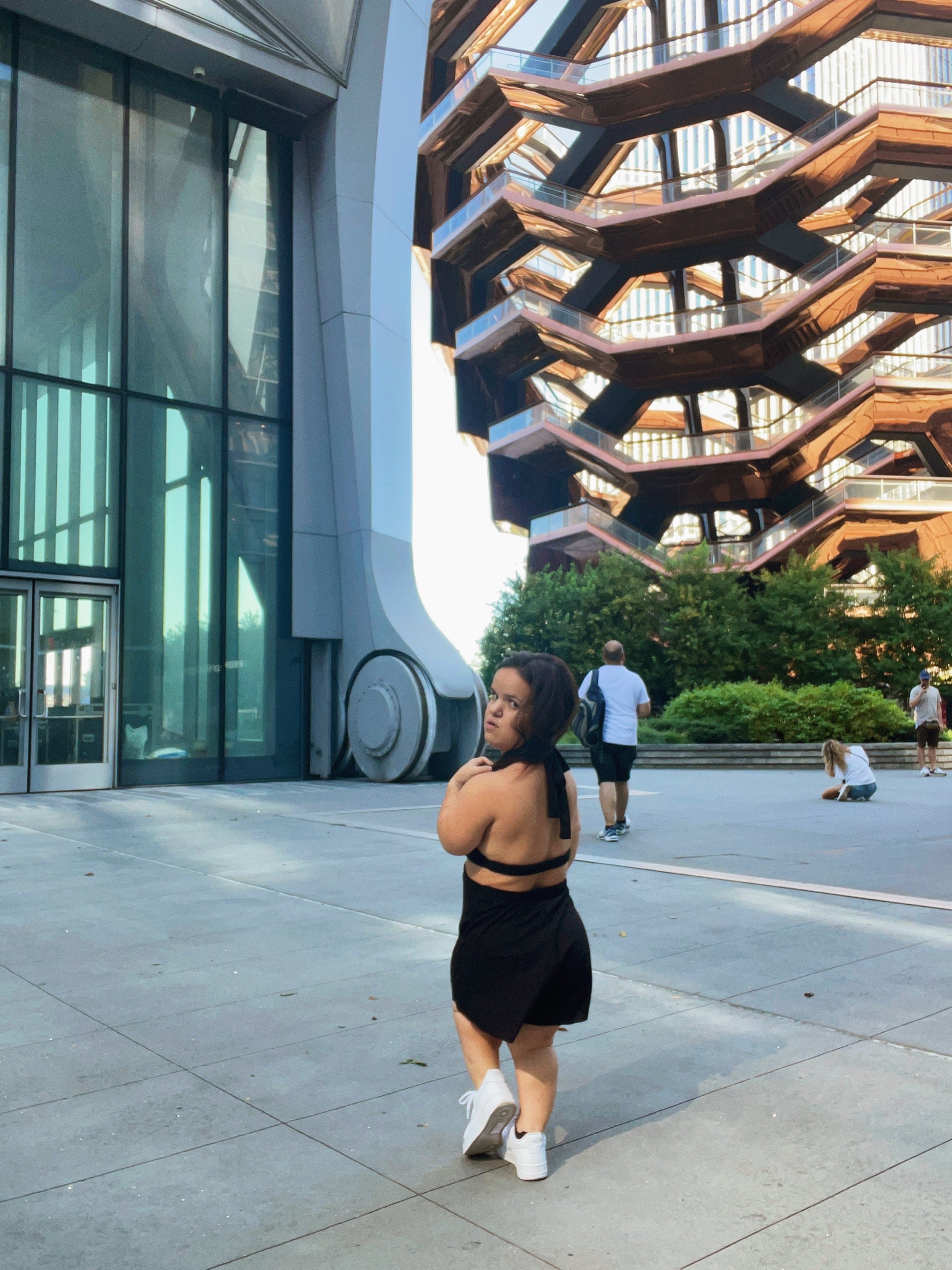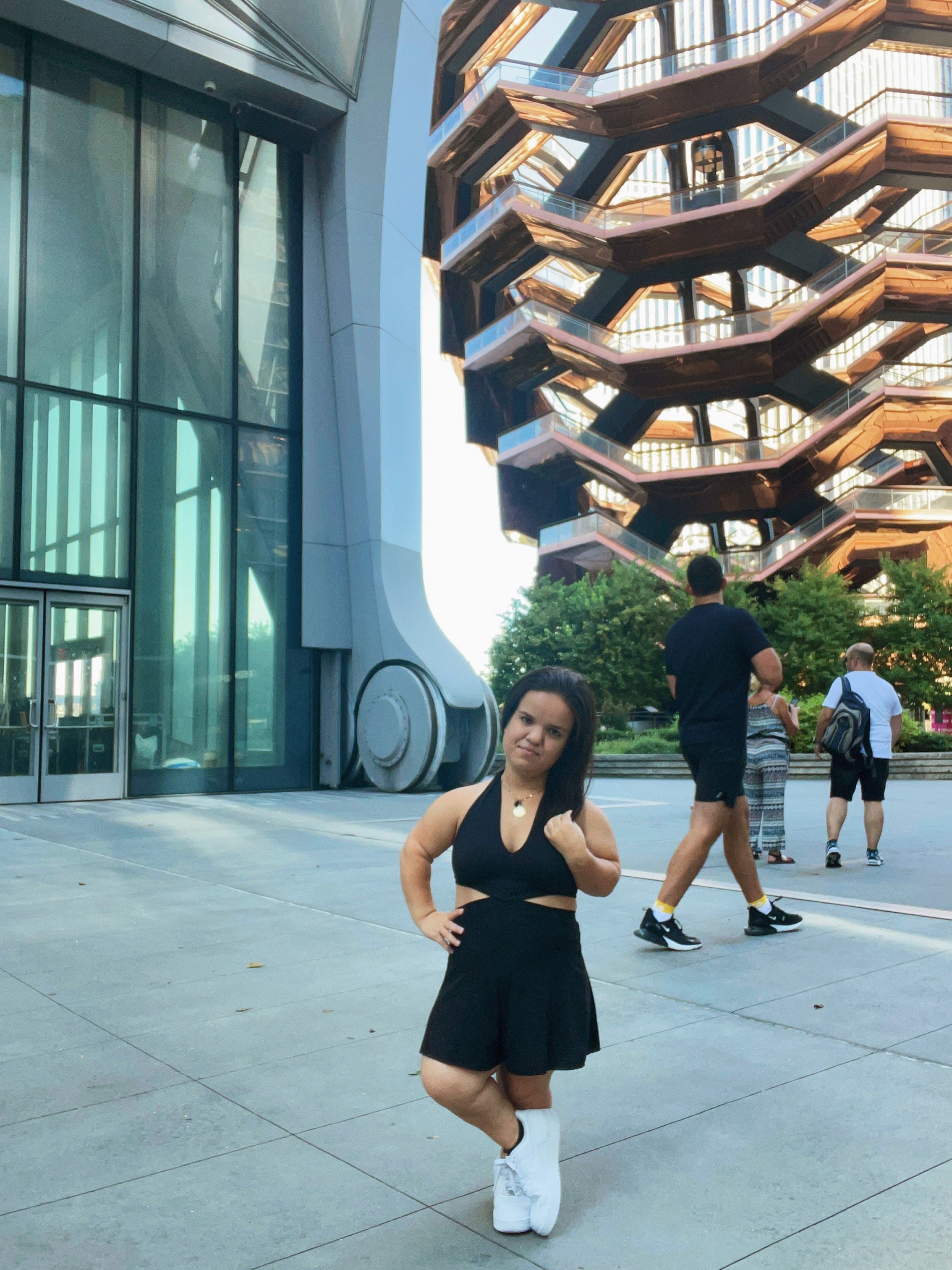NYFW - Fashion Is Frustrating
It has been quite some time since I’ve written about New York Fashion Week. For any new readers, when I previously covered Fashion Week, I would examine the designers’ collections, showcase my favorite looks, and examine how the garments could be adapted for a little person body.
This year, I knew I wanted to write something different. It just took me a bit of time, and many coffee dates with myself at Bluestone Lane (my favorite Aussie coffee shop, if you know, you know), to figure out and define what that something different would be.
For as long as I can remember, I have loved fashion but have never felt included, have never felt seen or represented. I started Always Looking Up to join the conversation, to create a platform that would allow me to advocate for accessible fashion, particularly for the little person community. Whether you are into fashion or not, it is an industry that affects everyone. We all get dressed in the morning. We all put on clothes that help shape our individual identities. I recognize that exclusivity has allowed the fashion industry, particularly high-fashion, to thrive, yet I can’t help but question it. Clothes should be accessible to every body type - straight, curvy, tall, short, non-disabled, disabled, etc.
This year, as I’ve done in years past, throughout Fashion Week I kept refreshing the Vogue Runway page, excited to see the shows from my favorite designers and discover some new designers to love. The fashion, as expected, did not disappoint. While I love the fall with the changing leaves, sweater weather, and it being socially acceptable to drink hot tea, seeing each designer's collection got me very excited for Spring 2023.
As for disability representation…
Disability WAS present. Two of my best friends, Bri Scalesse and Julian Gavino, wheeled the runways and absolutely slayed. There were other wheelchair models, models with limb differences, and perhaps models with invisible disabilities (I cannot be certain as those with an invisible disability have the right to not disclose). To the best of my knowledge, there were no models with dwarfism.
It is important to note that Open Style Lab, a non-profit organization dedicated to creating functional, wearable solutions for people of all abilities without compromising style, and Runway of Dreams, a non-profit organization that empowers people with disabilities to have confidence and self-expression through fashion and beauty inclusion, hosted fashion shows where all the models were disabled, though those shows were not a part of the official Fashion Week schedule.
Disabled people comprise the world’s largest minority, and is the only minority anyone can join at any time. One in four adults living in the United States, 26% of the population, are disabled. Yet, as you’ll hear in next week’s episode of Always Looking Up - The Podcast with model, advocate, and best friend Bri Scalesse, we estimate that approximately 2.6% of the models that walked or wheeled during fashion week were disabled.
2.6%.
What frustrates me the most about the lack of disability representation is the fact that there are designers and brands who are celebrated for being inclusive, for saying that they will design for any and every body, and have no visible disability representation in their shows. Being an inclusive fashion designer should not be limited to designing for curvier bodies. Being an inclusive designer should mean that you include disabled models, that you invite disabled models and influencers to your shows.
It is important to note that when I say that to be an inclusive designer means including disabled models, I am not saying that you necessarily need to be an adaptive designer. What I mean is that you have to be open to adapting, to altering your designs to fit the disabled model in that you would for a curvier model or a model who is slightly shorter or who needs the garment taken in. If you’ve ever seen a finale episode of Project Runway you would know that designers are making last minute alterations in the final moments before the show starts.
Having followed the industry for quite some time, I know that there are designers and brands who have consulted with members of the disabled community, who say they are working towards designing for people with disabilities, yet I haven’t seen it. Yes, I recognize that these things do take time, that there is much to learn when figuring out how to design for disability, but for some of these designers and labels it has been years and I can’t help but question what is actually being done. What progress is being made? Are they actually striving to be a more inclusive brand or at this point is it just empty words?
I love the fashion industry, have always loved the fashion industry, will always love the fashion industry. Yet, it frustrates me. It frustrates me that only 2.6% of the models on the runway this season were visibly disabled. It frustrates me that the inclusive shows with all disabled models were not included as a part of the official Fashion Week schedule. It frustrates me that disability is not a part of the conversation surrounding inclusion. It frustrates me that an industry driven by constant change, innovation, creativity, and originality, is consistently coming up with reasons as to why it can’t, or won’t, design for disability.





